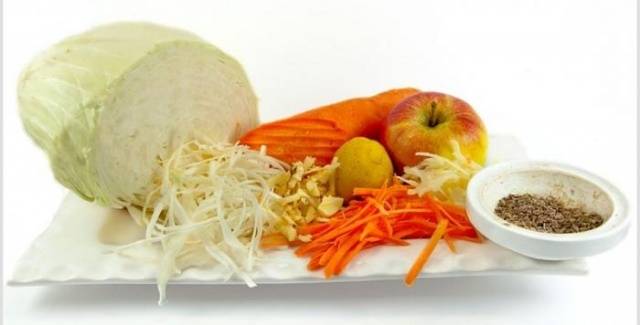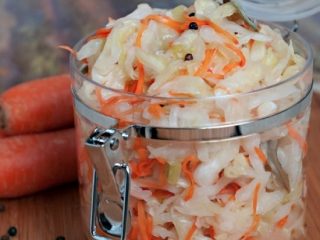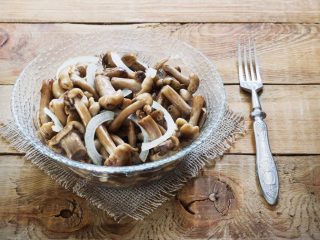Content
In winter, the human body lacks vitamin C. You can replenish its balance with salted cabbage. No wonder it has long been called the garden lemon. Exactly at salted cabbage there is several times more of it than in citrus fruits.
Pickling the cabbage in a saucepan, given the right conditions you can keep until the new harvest. During the winter, you can prepare not only salads and soups from pickles, but also delicious cabbage pies and pies. We offer several recipes to choose from pickling cabbage in a saucepan.
Salt or ferment
There are several ways to prepare white vegetables for the winter: salting, pickling and pickling. If there are no problems with the latter method, then disputes often arise regarding salted or sauerkraut.
Let's try to understand this issue:
- When salting, more salt is used, although the quality of the cabbage does not deteriorate. The finished product is obtained in a few days, and sauerkraut can be tasted after 7-10 days, or even later.
- In salted cabbage, nutrients and vitamins are preserved better than in pickled vegetables.
- Salted and sauerkraut contain calcium, so it can normalize blood pressure and strengthen the heart muscle.
As you can see, both products are an excellent opportunity to preserve vegetables in winter. So it’s up to you personally to choose pickling or pickling.
Choosing a pan for salting
Before presenting the recipes, let's talk about what kind of dishes you need to use for salted cabbage.
As a rule, wooden ones are best suited for pickling vegetables. barrels. But today it is difficult to find a storage place for such containers. Therefore, modern housewives prefer enamel dishes: buckets, pans. The size is selected depending on the needs of the family.
Beginning housewives often ask whether it is possible to salt vegetables in an aluminum container. This question has been discussed for decades, but there is no clear answer yet: opinions differ. But we still do not recommend salting or fermenting cabbage in an aluminum pan.
And that's why:
- Firstly, as experienced housewives have noticed, the pickling turns out dark.
- Secondly, and this is perhaps the most important thing - when salting, the alkalis and acids present in the brine enter into a chemical reaction with aluminum.
- Thirdly, salted cabbage has a metallic taste.
Salt the cabbage so that the table is not empty in winter
Recipe No. 1
We stock up on the following products for salting in the pan:
- cabbage heads – 6 kg;
- large carrots – 7 pieces;
- bay leaf and allspice (peas) - to taste;
- table salt – 420 grams;
- granulated sugar – 210 grams;
- water – 7 liters.
Salting method
- For pouring we need cold brine. It must be boiled before preparing vegetables. Pour 7 liters of water into a saucepan and bring to a boil. Add sugar and salt according to the recipe and boil for 5 minutes until the ingredients dissolve.
- The recipe involves finely chopping cabbage and carrots. You can use a board or a regular sharp knife for this purpose. The carrots are grated on a coarse grater.
- Mix the vegetables in a large bowl, do not add salt. Grind them until the juice appears.
- Place in layers in a saucepan, top each with pepper, bay leaf and garlic (optional). After adding a portion of the vegetable mixture, mix it as tightly as possible.
- When the pan is full, fill it with brine. Cover the top with cabbage leaves, place a plate and pressure. You can use a three-liter jar filled with water as oppression.
After 5 days you can taste delicious crispy cabbage, salted in a saucepan.
Recipe No. 2
This version of salted cabbage in a pan will appeal to lovers of spicy foods, since the ingredients include hot pepper. According to this recipe, pickling is quick and tasty, in just a day.
So, we will need the following ingredients:
- forks - 3 kg;
- carrots – 500 grams;
- garlic – 1 head;
- hot ground red pepper – 1 teaspoon;
- black pepper - a few peas (to taste);
- essence 70% - 2.5 tablespoons;
- granulated sugar – 30 grams;
- coarse salt - 70 grams.
Cooking features
- First we do the brine. The recipe calls for a little of it. Pour a glass of raw water into a saucepan, add salt, sugar and dissolve well, pour in the essence.
- We chop the vegetables at our discretion and place everything separately.
If you chop part of the cabbage finely and the other coarsely, the taste of the pickling will be more interesting, since the salting will not occur at the same time. - Add garlic and pepper to the carrots and mix well.
- Place a layer of cabbage in the pan, then a mixture of carrots, garlic and pepper. We carry out the work in this sequence until the pan is filled.
- Pour the brine into the pan with pickling, cover the surface with cabbage leaves. Place a plate on top and bend.
Transfer the cabbage, quickly prepared according to this recipe, into small jars, top up with brine from the pan and close with nylon lids. We will store it in the refrigerator.
Recipe No. 3
Do you want to get delicious pickling in a saucepan of an unusual color? Then use the suggested recipe. It combines white and red cabbage and beets.
What you will need:
- both types of cabbage, one head each;
- beets - 2 pieces;
- carrots – 3 pieces;
- water – 2 liters;
- rock salt – 120 grams;
- a little fine salt;
- garlic – 2 cloves;
- essence – 1.5 tablespoons;
- sugar – 60 grams;
- vegetable oil (refined) – 2 tablespoons;
- sprigs of dill with umbrellas and currant leaves - at your discretion.
How to salt
- Cut the peeled forks in half and chop. And half red cabbage According to the recipe, we chop the white cabbage finely, like vermicelli, and the remaining halves coarsely.
- Combine both types of cabbage with carrots, add fine salt, mix and knead well.
- Three carrots and beets on a coarse grater or chop. You can do the same as with cabbage to get different cuts.
- Grind the peeled garlic in a crusher.
- Place sprigs of dill and currants on the bottom of the pan, cabbage and carrots on top, then beets and garlic. In this order, lay out the ingredients in layers until they are gone. We compact each layer well.
To pickle cabbage you will need hot brine. It is prepared from oil, vinegar (optional), salt, sugar in a separate pan. Pour in the cabbage and proceed as usual.
If you used vinegar, then the most delicious pickling in the pan will be ready in 5 hours. Without vinegar you will have to wait a little longer.
Recipe No. 4
A large amount of salted cabbage is not always required. Sometimes you urgently need to salt a small batch while, for example, the dough for pies is being matured.
Required:
- kilogram of cabbage;
- three carrots;
- three cloves of garlic.
For the brine you need to prepare:
- 100 ml vegetable oil;
- 10 tablespoons of 9% table vinegar;
- 15 grams of granulated sugar;
- 1 tablespoon coarse salt;
- 500 ml water.
According to the recipe, the head of cabbage is chopped into small strips, the carrots are chopped on a coarse grater, and the garlic is chopped using a garlic press.
After mixing the vegetables with garlic, put everything in a saucepan and fill it with boiling brine (the brine is prepared in the usual way). After six hours, you can try the pickling and prepare salads, vinaigrettes, and pies from it.
Salt the cabbage according to an old recipe in a saucepan:
Tips for pickling cabbage
To make the pickling in a pan tasty and crispy, listen to our tips:
- Choose tight heads of cabbage with white outer leaves of late ripening, without damage or signs of disease. Use young cabbage. This definition will probably surprise many. There is nothing special - this is cabbage that ripened in the fall of this year.
- To quickly pickle cabbage in a pan, use boiling or hot brine.
- Cabbage can be cut as you like: into small strips, slices or pieces.
- Horseradish root, added during salting, will give the vegetable a special crunchiness and aroma.
- You need to salt vegetables with salt without additives. Remember that iodine will not only soften, but also make the product unfit for consumption.

















